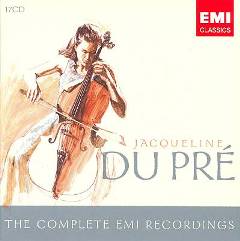Camille Saint-Saens – Cello Concerto (2007)
Camille Saint-Saens – Cello Concerto (2007)

1 Allegro non troppo 2 Allegretto con moto 3 Molto allegro Jacqueline du Pre - cello The Philadelphia Orchestra Daniel Barenboim – conductor
The first performance of the Cello Concerto was given on January 19, 1873, at the Paris Conservatoire, then a bastion of conservatism that usually programmed only works by old or dead masters. The Conservatoire's acceptance of the concerto gives an idea of the esteem in which Saint-Saëns was held at the time.
Formally, the Cello Concerto in A minor is an extension of the technique Saint-Saëns used for the much earlier Violin Concerto in A major of 1859. There are no pauses between the three sections of the Cello Concerto, although these are clearly delineated and have different tempo markings. Some analysts have described the work as a single, sonata-form movement with a free recapitulation, while others have suggested the work is a three-movement structure with shared material between the first and last movements. What is most important is the element of contrast as a driving force in the piece, which was composed not long after Saint-Saëns conducted performances of Liszt's symphonic poems. Saint-Saëns now began composing such works himself, such as the Danse macabre of 1874. Much of the bombast found in Liszt's tone poems, however, is absent from those by Saint-Saëns, but the idea of thematic transformation is an important element.
Marked Allegro non troppo, the first movement begins with an aggressive melody built of triplets from the solo cello. The lyrical, meditative theme for the cello that follows is accompanied by the triplet figure in the orchestra. A new, Animato passage with double stops for the cello leads to an even faster tempo with yet another theme, this appearing in the orchestra and on F major. Just when it seems like this will be the new key, the opening triplet idea sounds again in the cello, but on D major, and development of the first and second themes ensues.
After a rest just long enough for the cellist to take a breath, the second section, Allegretto con moto, begins with the orchestra. This segment is a delicate minuet with a narrow-range and stately melody. When the cello enters, it first sounds alone before the orchestra begins the minuet again beneath the cello's countermelody. After the cello takes up the minuet tune, there is a cadenza for the soloist, which leads to fragments of the minuet theme in different harmonies, finally settling on B flat as the Allegro tempo returns.
The triplet theme from the first movement, now in the orchestra, opens the finale. Saint-Saëns varies this material to return to the tonic before a new idea, Un peu moins vite, sounds in the solo cello. Given forward impetus through syncopation, the rhythm is Sarabande-like until the cello takes off with a flurry of sixteenth notes that pushes the harmony away from A minor. Contrast is a salient feature of the rest of the piece, which behaves somewhat like a rondo. The opening triplet theme and the third theme of the first movement introduce the coda, which contains new material and closes the piece in A major. ---John Palmer, Rovi
download: uploaded yandex 4shared mediafire solidfiles gett mega zalivalka filecloudio anonfiles oboom ziddu
Zmieniony (Poniedziałek, 21 Kwiecień 2014 19:02)
